Movie Review
 |
 |
 |
 |
 |
 |
 |
Death on the Nile: What a Shame!
Mark Williams
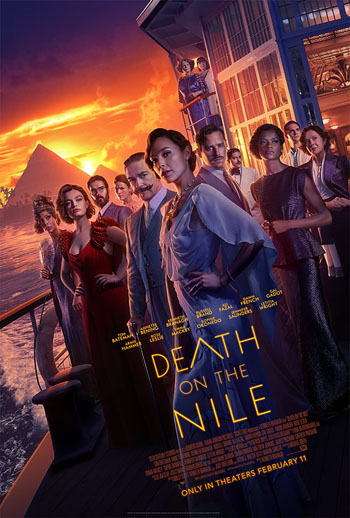
Magnificent panoramas, but too many revolutionary aspects
The beautiful and wealthy Linette Ridgeway (Gal Gadot) has eloped with the penniless but charismatic Simon Doyle (Armie Hammer). Doyle happens to be ex-fiancee of Linette’s (now former) best friend, Jacqueline de Bellefort (Emma Mackey). Jacqueline becomes crazy, having lost both her fiancé and her best friend.
Six weeks later, as Doyle and Linette honeymoon in Egypt with friends and family, she follows them intent on vengeance. World-renowned detective Hercule Poirot (Kenneth Branagh) is part of the wedding party, hired by the newlyweds to protect them from Jacqueline’s threats.
The main events of the film take place later, aboard the S.S. Karnak, a steamship traveling the Nile. Doyle and Linette have chartered the Karnak for the wedding party under the pretext of exploring the wonders of Egypt with their friends, but the real reason is to escape Jacqueline. The drama aboard the Karnak – killings, intrigues, etc – is the main event of the story.
I will analyze more plot elements later – which will include spoilers – but for now let me step back and highlight the good elements in this film. I will, however, make criticisms later on.
Poirot’s heroism
Immediately after the triumphant 20th Century Fox fanfare, the film intriguingly opens in black and white: a battlefield in France during World War I.
Orders come from Headquarters: Attack the Germans at such-and-such an hour. Everyone knows it is suicidal; they will be walking directly into the machine gun nests.
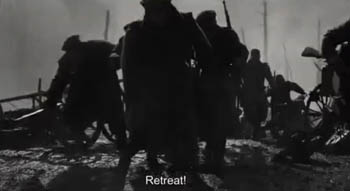
The French forces in retreat, but Poirot emerges a hero
“What if you are wrong? The wind will blow the gas back at us and kill us all,” someone objects.
Poirot replies with very believable conviction: “I will not be wrong.”
The result: the Commander takes Poirot’s advice against the objectors. The Huns are “smoked out” and forced to retreat.
The Commander, nervous and unvigilant, is killed when he steps on a landmine. Poirot tries to warn him, too late, but he does manage to save the rest of his regiment, making him a war hero but leaving his faced scarred from the explosion. Later Poirot grows an elegant moustache which covers the scar.
While some reviewers of Death on the Nile sarcastically deride the World War I scene as superfluous to the plot of a murder mystery film – one person called it “a 5- minute introduction to Poirot’s moustache.” I thought, especially on my second viewing of the film, this scene is a good introduction to Poirot as protagonist of the film. It helps the viewer to take him seriously and respect him as a character.
By way of parentheses, after the World War I scene, the film changes into color à la Wizard of Oz. I liked this visual effect. It emphasized the difference in time between 1914 and 1937.
Beautiful & marvelous
Watching the film, I observed a subtle, but definitely unintended, counter-revolutionary message: the fight between grandeur and mediocrity. We see the colossal Pyramids and Sphinx, the sumptuous hôtel Assouan and the temple of Abu Simbel, etc – and compare it with the millionaires on their comparitively tiny and ephemeral steamship. There is simply no comparison. I do not know if the writers of the film realized this.
Monsieur Poirot is conservative and old war in his manners and dress, a little out of place in the wedding party. But curiously he is not at all out-of-place amid the grand panoramas of Egypt.
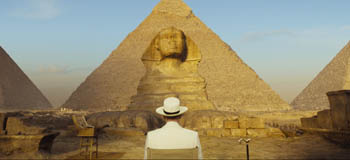
Poirot contemplates the Phynix; below, sun rising over with the anchored Karnak dwarfed by the temples
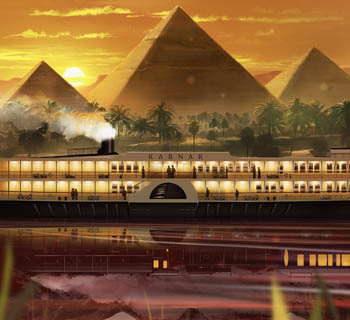
Later we see the First Cataract Hotel at Assouan on the banks of the Nile where the wedding party is held. In this hotel a Belle Époque – pre- World War I – splendor, is seen, something definitely pleasant.
At the wedding party, the mad ex-fiancée, Jacqueline, dramatically appears, leaving everyone shocked and speechless. She has “stalked” the wedding party all the way from England.
To give the slip to Jacqueline, who shows Poirot her gun she will use to kill the newlyweds, Linette and Doyle charter a large and well-appointed steamship, the S.S. Karnak, and take their wedding party with them.
The first – and last – destination of the Karnak is Abu Simbel, the massive rock-cut temples of Pharaoh Rameses II. Again, the visuals here are marvelous. The shot of the sun rising over with the anchored Karnak dwarfed by the temple and the mountains, has elements of the epic and mystery. The music is also effective in conveying these sentiments.
Revolutionary elements
I go on to give a brief resumé of the notable revolutionary elements in the film before I address the immoral elements.
After Poirot, the film tends to present Linette as a second protagonist. I do not agree with this. In consenting to the overtures of her best friend’s fiancé, allowing him to break an existing engagement to marry her a mere six weeks after being introduced, she invites trouble upon herself and her family.

Revolutionary characters: Lynette, 'Enough champagne to fill the Nile'’; below, a communist & lesbian godmother Marie van Schuyler, at left
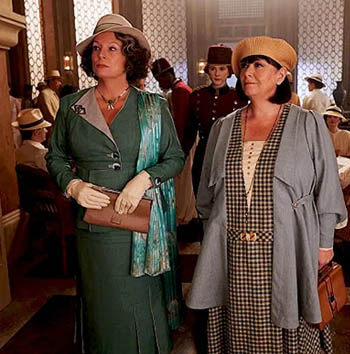
I recall a very unedifying scene when “old money” Linette assumes a tasteless nouveau-riche spirit, saying “We have enough champagne to fill the Nile!” as she flings a glassful into the river.
Does the film make subtle promotions of Communism? I think so. Linette’s godmother, Marie van Schuyler (played by Jennifer Saunders), flaunts her red credentials throughout the film: She had donated her fortune to the Communist Party, refuses help from the servants and crew – “I won’t be party to the oppression of the working class!” – and constantly criticizes the “bourgeois decadence” of the wedding party.
Unfortunately, many of these criticisms are accurate so the audience is induced to sympathize with the openly communist (and, as we later discover, lesbian) character. This is bad.
The film has several interesting subplots of disputable moral quality. One is Mr. Bouc’s love interest in the jazz singer’s niece. Bouc’s aristocratic mother, Mme. Euphemia Bouc (Annette Bening), does not approve of her Bohemian son’s latest adventure to “marry for love.” She hires Poirot to make a background check on the jazz singer’s niece, but Poirot clears her, to Mme. Bouc’s chagrin.
Throughout the film Mme. Bouc is presented as bitter and even cynical, but I found myself sympathizing with her in spite of her defects. Though inferior in manners, in terms of distinction she is comparable to Detective Poirot. She relentlessly tries to get Bouc to abandon his playboy ways and become responsible. Bouc ends up dead – shot by Jacqueline – before he has the opportunity to change.
Other revolutionary elements include, for example, a Lord who resents “frilly” nobility and prefers to be a doctor in West Africa; two or three other marriages for “love,” even Monsieur Poirot making concessions towards the bad jazz music and referring to the unnatural vice of communist Mme. van Schuyler and her live-in “nurse” as “love”...
Immoral elements
There are also several immoral scenes. For a very uncomfortable 3 or 4 minutes at the beginning of the film, audiences are subjected to the goings-on in a jazz club with the most bold and suggestive dances I have ever seen.

More stops desired on the way down the Nile;
less immoral dress & behavior
I do not know how the film only received a PG-13 rating. From the point of view of Catholic Morals, the film is clearly to be condemned as offending.
Conclusions
Death on the Nile could have been much better. I am not even speaking about moral content with its obvious transgressions; I am talking about the plot.

The exotic First Cataract Hotel at Assouan
If for no other reason than to please the audience, pretexts could easily have been devised by those crafty writers – who drew up endless pretexts to fill the film with immoral scenes – for the Karnak to make further stops along the Nile River, beyond Abu Simbel. In my opinion the one stop was a missed opportunity to showcase more of the splendors of Egypt.
Second, a word about the end: The “reveal” should have been a little more dramatic and certainly it should have been less predictable. We all know by the end that Jacqueline and Simon Doyle were conspiring together all along to kill Linette and take her fortune.
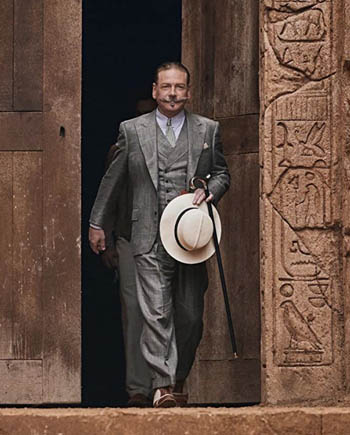
An elegant Poirot does not disappoint
The reveal of the killers was not even dramatic. It was not accompanied by any dramatic effects. Poirot revealed it as something obvious, and the scene, which should be highly exciting, is anticlimactic.
Third, two elements stand out as particularly worthy of praise: The first are ambiences of the Wonders of Egypt and some of the elegant Belle Époque customs aboard the Karnak and at the hôtel Assouan. The second is the character of Monsieur Poirot, who carries the show. Actor Kenneth Branagh played him very well.
So, to conclude: What shall we say about Death of the Nile? Let me make a judgment.
Do not go to see this movie. Its potential was squandered by the many offensive, immoral scenes, by a bad presentation of characters and by an amateurish plot. What a shame! What a missed opportunity.
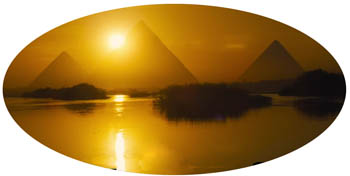

Posted April 11, 2022
______________________
______________________





